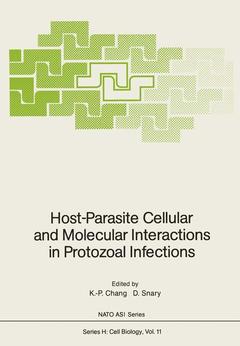Tropical diseases such as leishmaniasis, malaria. trypanosomiasis, toxoplasmosis and amebiasis continue to plague the world, resulting in considerable morbidity and mortality, especially in the third world countries. These diseases are caused by a group of protozoa which have, over the years, undergone evolutionary adaptation to live often intracellularly in a parasitic way of life. So well-adapted have they become that they recognize the right hosts or cells to parasitize, yet at the same time they escape recognition and destruction by the host immune system. The mechanisms of such recognition and the escape of recognition are governed largely by host-parasite surface membrane interactions at the cellular and molecular level. Unique molecules produced by unusual pathways of these parasites have also been discovered and found to play important roles in their survival in the host. Understanding these mechanisms and pathways is essential not only to formulate a rational strategy for chemo- and immuno-prophylaxis and -therapy but also to unravel the mystery of biological evolution in symbiosis and parasitism. In the advent of our knowledge on the molecular biology and biochemistry of parasite membrane and other molecules, it is opportune to examine and discuss their possible roles in host-parasite recognition and interaction in a comparative approach. To highlight the recent advances of this area in various host-parasite systems, a NATO advanced Research Workshop was held from September 27 to October 1, 1986 at Hotel Villa del Mare, Acquafredda di Maratea, Italy.




